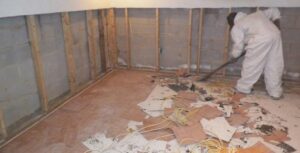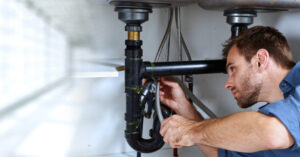When homeowners experience problems with their AC system, they usually call in a technician. This may involve recharging refrigerant, repairing a compressor, or replacing a motor.
However, if you’re comfortable working around electricity and have some basic tools, you can save yourself the cost of a professional by doing some simple DIY home AC repair. Follow these tips to get your AC system up and running quickly. For more information, you can visit AC Repair Woodland Hills to proceed and inquire.

- Thermostat Issues
The thermostat is one of the most essential parts of an air conditioning unit. If it isn’t working properly, several things may be to blame. These include a dead battery, a broken thermocouple, or improper installation.
If you’re experiencing any of these problems, it is likely time to call an AC repair professional. However, before you do, there are a few simple troubleshooting steps that you can try. First, check to make sure that the thermostat is set correctly. It may be set to “heat” instead of “cool,” or the fan could be on instead of in auto. Also, ensure a vent or direct sunlight doesn’t cover the thermostat.
Another common issue is a malfunctioning display. If the screen is blank or flickering, the batteries are likely dead. If this isn’t the case, it may be due to a broken thermocouple or the thermostat.
When checking for a thermocouple issue, you’ll want to look for signs of corrosion on the terminals or wires. You can typically remove this build-up with an electronic contact cleaner. Finally, if you’re having any electrical issues with your thermostat, it may be time to replace it.
Thermostats should never be mounted directly next to a fireplace, in a cold area, or direct sunlight. This can cause the thermostat to read inaccurate temperatures and lead to performance problems. The thermostat should also be properly leveled on the wall when mounting. If you notice that the thermostat isn’t level, it will likely need to be remounted.
- Electrical Issues
It’s important to note that a skilled professional should be the only person who performs any AC repair work that involves electrical components. This is because of the high risks associated with working with electricity, including fire hazards and even electrocution. Incorrectly handling these types of tasks could also cause damage to the AC unit itself, requiring costly repairs or replacements.
However, you are an experienced DIYer and are not afraid of taking on small projects in the home. In that case, you can resolve some electrical issues related to your air conditioner. Some of these projects include replacing fuses, changing out a transformer, or checking for electrical problems with the fan motor.
First, before beginning any AC electrical issue repair, you should always ensure that the unit’s power is completely shut off at the circuit breaker. Then, you can start with a visual inspection to look for any exposed wires. If you find any bare wires, it is a good idea to call a qualified technician immediately, as they can be a serious fire hazard.
The next thing you can do is to replace the fuse. If it blows again, there is another underlying issue; you must contact a professional.
A glance at your electric bill should also reveal any significant changes in energy consumption, as these can often indicate an electrical problem within the system. You should also keep track of any frequent tripping, as this is another sign that the compressor in your AC unit has failed and will need to be replaced.
- Condensation Drain Issues
During normal operation, an air conditioner condenses water in the evaporator coils and pumps it down the drain line. Over time, dirt and debris can get into the line, leading to a clog. While this is a common issue, it can be prevented with regular AC maintenance visits.
A clogged AC drain line can cause significant damage to the system and the home. A qualified HVAC technician will check all aspects of the system, including the drainage line, during a routine maintenance visit. If the drain line is clogged, the technician can remove it and prevent further issues.
Some signs that a drain line is blocked include high humidity and a foul sewer smell when the air conditioner runs. Sometimes, the HVAC professional may need to replace the entire drain line or the fittings, pipes, and joints corroded from the accumulated water.
To clear a clogged condensation drain, the HVAC professional will start by turning off the power to the air conditioner unit. They’ll then locate the drain pan and either soak up the excess water or suck it out using a wet-dry vacuum cleaner. Then, they’ll clean the drain pan with white vinegar and hydrogen peroxide to remove any dirt and grease that’s built up. They’ll also flush the drain line with water to keep it clean and prevent algae growth. They’ll test the drain line by pouring water into it to see if it flows freely. If it doesn’t, the technician must use a plumbing snake to break up any blockages. They’ll then vacuum up any remaining debris and reseal the drain line.
- Filter Issues
If your AC unit’s evaporator coil freezes up, it could indicate a filter problem. If this happens, turn off your air conditioner to fan-only mode. This will allow the coils to thaw before you can turn your system back on. Then, you can replace your filter and ensure the unit is clean to prevent this issue from recurring.
Clogged filters restrict airflow and force the system to overwork. This can lead to overheating and other problems if it goes on too long. Additionally, your energy bills will skyrocket because the system consumes more energy than it should to keep you cool.
Dirty filters allow dust, dander, and other allergens to enter the air ducts. This can cause respiratory issues and other breathing conditions for people with asthma. Changing your filter regularly keeps the air circulating throughout your home and reduces unhealthy pollutants.
The evaporator coils on an AC unit can easily become dirty. When this happens, the coils will be covered with dust that can freeze them. The ice can also lead to water leaks and a breakdown of the coils. This can be a very costly repair.
Your AC technician will be able to show you how to check and change the filter if you need help with how to do it yourself. He can also help you choose the right filter for your home and supply the correct size so you can do it yourself. This can save you money in the long run and ensure your filter is changed often enough to avoid potential problems.
- Duct Issues
Air duct issues can significantly affect the performance and longevity of your AC unit. Failing ducts can result in the air conditioning system having to work overtime, which can cause a lot of strain on the unit. This can also result in high electric bills. Duct issues often include leaks, clogged vents and registers, pest infestations, and unbalanced air pressure.
Leaks are the most common problem with ductwork related to AC repair. Typically caused by damaged seals or loose or missing segments, these leaks can greatly impact your AC system. They also waste energy and can reduce indoor comfort.
If you notice a loss of airflow from your ducts, it’s important to call a professional for an inspection. This is likely a sign that you have a broken section of ductwork and should be repaired as soon as possible to prevent further damage.
Clogged and dirty vents or registers frequently result in poor air circulation. This is due to pet dander, dust, rodents, insect droppings, and unhealthy VOCs (Volatile Organic Compounds) from paints, solvents, and printer ink. Poor air quality can lead to sneezing, allergies, and cardiovascular disease.
In many cases, you can fix the issue of clogged or dirty vents or registers by covering them with paper towels and turning on your HVAC fan. This will allow you to see where the drafts are coming from, and you can then take action to clear them out. However, if your ductwork is heavily damaged and has multiple leaks, it’s best to have it professionally cleaned and repaired by an HVAC technician.


